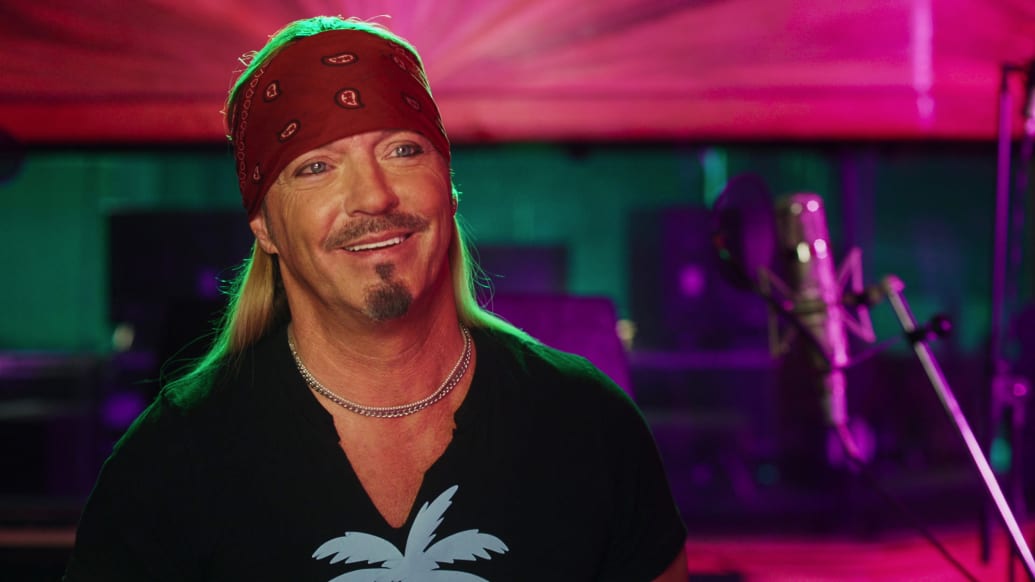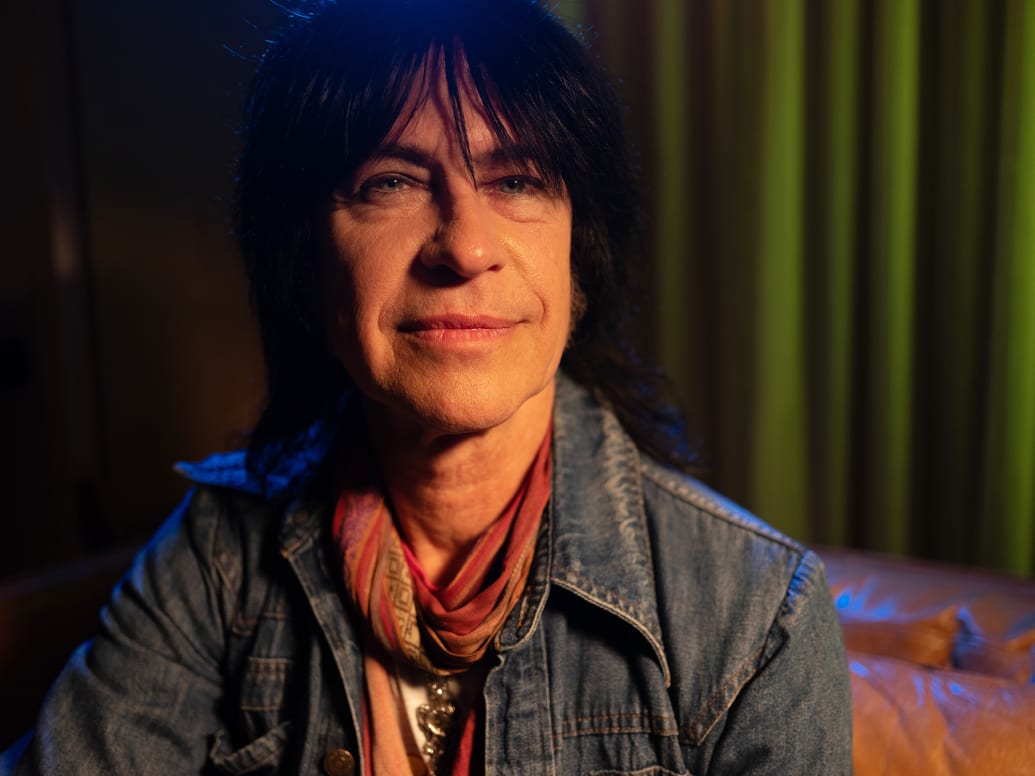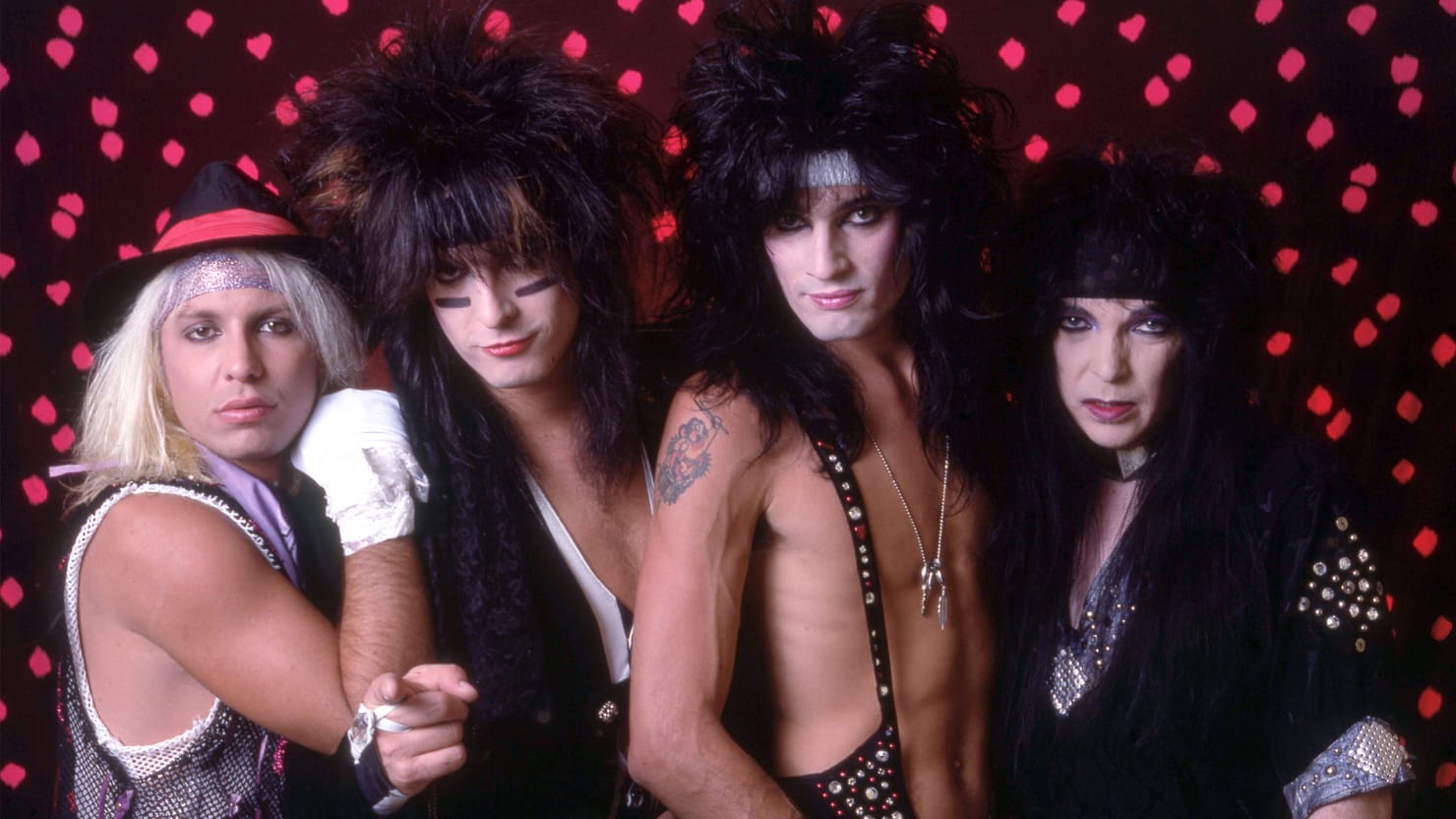The 1980s hair metal scene has already received a definitive documentary account courtesy of Penelope Spheeris’ The Decline of Western Civilization Part II: The Metal Years, and Nöthin’ But a Good Time: The Uncensored Story of ’80s Hair Metal doesn’t outdo it.
Paramount+’s three-part docuseries, which premieres Sept. 17, is a non-fiction power ballad for the era of big hair, tight spandex, and rampant debauchery and depravity, reminiscing with an affection that isn’t, alas, matched by its incisiveness. Light on the decade’s biggest luminaries and even lighter on insight, it merely opts for sketchy nostalgia.
Hair metal was all about excess, so Nöthin’ But a Good Time (based on the book by journalists Tom Beaujour and Richard Bienstock, who appear) is invariably most entertaining when its talking heads recount anecdotes about their over-the-top heyday.
Manager Doc McGhee discusses Motley Crüe bassist Nikki Sixx and drummer Tommy Lee’s habit of being “dark angels” who ran around biting people—hard enough to leave lasting marks—or devious kicks. Great White singer Jack Russell (who just passed away) details a narcotics habit that drove him to repeatedly rob his dealer, which led to an incident where he was so high during a stick-up that he got into a fight with the guy’s maid, ultimately shooting her through a bathroom door.
Similar tales of sex, drugs, and mayhem abound, from David Lee Roth hogging the bathroom at L.A.’s Rainbow Room to receive blowjobs, to manager Alan Niven being introduced to Guns N’ Roses guitarist Slash’s enormous pet snake—stories that highlight how these rock gods’ lifestyles were as loud and brash as their music.

Bret Michaels in Nöthin’ But a Good Time.
Wyatt T Troll/Paramount+
Other than these occasional eye-openers, however, Nöthin’ But a Good Time is a formulaic and shallow affair.
Director Jeff Tremaine (co-creator of Jackass) briefly contextualizes hair metal as a rejection of the New Wave that was all the rage in the late ’70s, and a throwback to the long-haired rock that had preceded it—except this time with more extreme style and showmanship.
Its birthplace was Los Angeles’ Sunset Strip, and its de facto parents were Motley Crüe, whose unrepentant wildness was their biggest asset. Originally living in an apartment up the street from the Whiskey A Go Go, the band members reportedly foraged for food and cigarettes in the club’s trash cans. Despite this lowly state of affairs, they caught the eye of up-and-coming A&R executive Tom Zutaut, who signed them to Elektra records, thereby turning them into a sensation and kickstarting the entire hair metal phenomenon.
Nöthin’ But a Good Time touches upon Crüe’s now-infamous 1983 tour supporting Ozzy Osbourne, during which the two acts bonded over their insane mischievousness and substance abuse—hich was so great that, once the run was done, everyone went into rehab—but the docuseries suffers from not having any of them participate.
That’s a persistent problem, as Tremaine only gets a couple of household names on camera (such as Poison’s Bret Michaels) and otherwise relies on guitarists, bassists and singers that are primarily known to hardcore fans. In many cases, what they have to say is amusing, yet it renders the proceedings somewhat B-grade, and so too do the intermittent animated interludes that dramatize its bonkers material, like a tale of Ozzy defecating in hotel room customers’ shoes.

Nöthin’ But a Good Time’s defining problem is that hair metal wasn’t a deep musical form and its best practitioners were just good songwriters who wanted to have fun and get laid, and there’s not much more to say about it than that.
Nonetheless, Tremaine’s docuseries at least says it with moderate enthusiasm, laying out how Crüe’s popularity spearheaded an early metal wave (including W.A.S.P. and Ratt) that soon gave way to a second generation of glam acts that were more overtly flamboyant and poppy, led by the likes of Poison, who moved from their small-town Pennsylvania home to California and worked tirelessly to promote themselves via millions of flyers plastered all over the Strip. Their success at selling records and attracting hordes of female as well as male fans became the lure for thousands of aspiring bands to flood the area, resulting in a handful of imitative triumphs and a host of flameouts.
Nöthin’ But a Good Time doesn’t miss the biggest stories of the era, be it guitar maestro Randy Rhoads’ untimely death or the rise of Guns N’ Roses as the scene’s true titans (and last hurrah). However, it skims over everything, rendering the docuseries superficial.
Slipknot frontman Corey Taylor praises hair metal for its straightforward pleasures and, as importantly, its undeniable catchiness, singling out Poison’s “Talk Dirty to Me” and slandering the “pretentious f—s” who would badmouth it. Yet Tremaine has no interest in investigating hair metal via ’80s culture at large, meaning it simply comes across as a fad predicated on having a blast and getting one’s rocks off. This is true, but that turns out to be insufficient to pad three episodes.

Jeff Tremaine and Corey Taylor.
Wyatt T Troll/Paramount+
Hair metal’s gleeful objectification of women warrants (get it?) a few passing comments in Nöthin’ But a Good Time. The main draw, though, are tidbits like Riki Rachtman, owner of the Cathouse nightclub (and future host of MTV’s Headbanger’s Ball), recalling a Guns N’ Roses show that was preceded by Axl Rose chasing a drunk David Bowie down the Strip because the Starman had hit on his girlfriend.
Tremaine recognizes that a lack of inhibition was the appeal of this genre. Unfortunately, he only briefly touches upon the downside to that immoderation, and nothing he comes up with can match the legendarily depressing scene from Spheeris’ Decline of Western Civilization Part II in which W.A.S.P. guitarist Chris Holmes pours vodka on his head in a swimming pool while decrying himself as “piece of shit” as his mother sits beside him.
Those looking for more than a skin-deep portrait of Quiet Riot, Dokken, Skid Row, and the rest will be disappointed by Nöthin’ But a Good Time. Still, there is some amusement to be had from this fond look backwards, including via Kix guitarist Brian “Damage” Forsythe relaying how, as soon as grunge took off, the plug was pulled on the entire scene – quite literally in his band’s case, whose music video was unceremoniously canceled mid-shoot (!) because the label had decided that the party was officially over.




![Tyson Foods Plant [Photo: Food Manufacturing]](https://southarkansassun.com/wp-content/uploads/2023/08/iStock_1185520857__1_.5e441daa51cca-600x337.jpg)








![Silverado Senior Living Management Inc. [Photo: Los Angeles Times]](https://southarkansassun.com/wp-content/uploads/2023/10/download-6-4-600x337.jpg)

![China's Wuhan Institute of Virology [Photo: Nature]](https://southarkansassun.com/wp-content/uploads/2023/09/d41586-021-01529-3_19239608-600x337.jpg)















